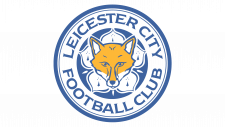Bayer 04 Leverkusen Logo
Bayer 04 Leverkusen is a professional football club. A group of workers from the Bayer chemical factory founded it. They established the club in Leverkusen, a city in Germany. The club was formed to provide recreational activities for the factory’s employees. The initiative quickly evolved, promoting sports and community engagement.
Meaning and History
Bayer 04 Leverkusen came into existence in 1904. The club began as a company team for Bayer AG, a multinational chemical and pharmaceutical company. Over the years, Leverkusen has made significant strides in German and European football. In 1997, they reached the UEFA Champions League final but were runners-up. They are commonly known as “Die Werkself”, a nod to their origins as a factory team. This nickname literally translates to “The Company’s Eleven”. Throughout its history, the club has been known for developing young talent and maintaining a competitive presence in the Bundesliga.
What is Bayer 04 Leverkusen?
Bayer 04 Leverkusen is a German football club based in Leverkusen, North Rhine-Westphalia. The team competes in the Bundesliga, Germany’s premier football league. Known for its robust youth academy, the club has a reputation for developing emerging football talent. Leverkusen is often called “Die Werkself”, reflecting its origins in the Bayer chemical factory.
1904 – 1907
The emblem in view features a regal lion with wings, dominating the center. It stands astride a blue globe, possibly symbolizing global reach or sportsmanship. Surrounding the lion, the circular border proclaims “TURN-U-SPIELVEREIN LEVERKUSEN 1904”, denoting the club’s rich history and identity. The color scheme is a classic combination of gold, blue, and white, exuding a sense of tradition and vitality. This logo encapsulates a legacy, merging the world of sports with a sense of heraldic grandeur.
1928 – 1938
This shield-shaped emblem showcases stark contrasts with its predecessor. A radiant black and white backdrop encircles a bold, red oval center. “BAYER” stands out in stark white, nestled above “04”, signaling its heritage. Above, the letters “Sp.” and “Vg.” bookend the top arc, hinting at a sporting venture. The design opts for simplicity and impact, shedding any figurative elements for geometric strength. It’s a modernist pivot, embracing minimalism and clarity in its message.
1948 – 1965
The logo transforms again, now adopting a triangular form. A vibrant orange band tops the design, featuring “SV Leverkusen” in white. Below, a bold black triangle houses “BAYER” encircled, signaling a focus on identity. The design is stripped of embellishments, favoring a cleaner, more abstract look. This iteration leans into a more corporate aesthetic, highlighting the name over historical or cultural symbols. It’s a crisp, focused rebranding, embracing minimalism and modern design sensibilities.
1965 – 1970
Now circular, the logo radiates simplicity and boldness. The outer ring’s passionate red frames the iconic “BAYER 04 LEVERKUSEN” in a loop. Central is a stark white circle with “BAYER” and “04” stacked, symbolizing unity. This design is devoid of any ornamental excess, favoring immediate recognition. It’s a concise emblem, tailored for an era of branding efficiency and identity consolidation.
1970 – 1976
The evolution of the logo continues with a dynamic triangular backdrop, pointing downward. The previous circle remains, now imposed on this triangle, containing “BAYER 04” in bold white against red. The design’s juxtaposition of shapes—a circle on a triangle—creates an intriguing visual tension. This design favors the dramatic, with the black triangle providing a stark contrast to the bright circular insert. The focus is laser-sharp on the club’s name and foundation year, indicating a proud display of identity and history. It’s a harmonious blend of tradition and modernist graphic design.
1976 – 1984
The iteration departs into a rectangular shape. The left side, a sharp black meets red. On the right, a clean white background hosts a large “04” beside “LEVERKUSEN,” both in black. The composition is geometrically bold, cutting that lends dynamism. This stark division of space speaks to modernity and the forward motion of the club. A notable shift from tradition, it embraces a visual language of the future. It’s a logo that breaks from past conventions, stepping confidently into a new era.
1984 – 1987
The logo’s transformation retains its rectangular form but softens the edges. The left features a bold diagonal split, now in white over red. The right side, previously stark white, now shows “TSV Bayer” above a large “04 Leverkusen”, all in a muted gray. This design feels more balanced, the diagonal delivering movement and energy. The typography has shifted from bold black to a gentler gray, possibly to soften the visual impact.
1988 – 1996
The this rendition sees a shift from the muted grays to crisp black text. “TSV Bayer” now stands prominently above a large “04,” with “Leverkusen” just below, all set against a stark white background. This design sharpens contrast and readability, reinforcing the club’s presence.
1996 – 2005
The logo undergoes a dramatic revival, bringing back the heraldic lions from its early days. Two red lions flank a white oval containing “BAYER” vertically. Above, “1904” is proudly displayed on a yellow banner, marking the year of the club’s inception. The name “Leverkusen” curves on a matching yellow scroll below, uniting the elements. This design reintroduces traditional symbols of strength and heritage, signaling a return to classic motifs. The use of vivid red, yellow, and bold lettering gives the emblem a timeless quality. This rendition is a blend of modern typography and age-old iconography, celebrating the club’s long history.
2005 – Today
The changes are subtle, with the most notable being the variation in color shades. The red of the lions appears a bit richer, and the yellow of the banners may have a different tone. The black outlines look more pronounced, which could be enhancing the overall contrast. These nuanced shifts in hue contribute to a refreshed look without altering the logo’s core design elements.





















